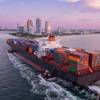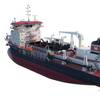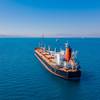Siemens Wins Marine Propulsion Order
The Siemens Drive Technologies Division has been awarded a contract worth tens of millions of Euros from Daewoo Shipbuilding and Marine Engineering (DSME) to implement eco-friendly propulsion and power generation system in container ships which will comprehensively reduce transit costs and provide in achieving the best operational CO2 Index in accordance with the International Maritime Organization (IMO).
Apart from administering shaft generator motors and a power generation system, Siemens will also furnish the company with expertise in power management and Waste Heat Recovery Control (WHR). This approach will substantially contribute in depreciating the emission of significant air pollutants.
Headquartered in Seoul, South Korea, Daewoo Shipbuilding and Marine Engineering (DSME) is the second largest shipbuilder in the world. In February 2011 the company entered into a contract with A. P. Moller-Maersk Group (Maersk Line) to build 20 Triple-E class vessels. These triple-E class containers signify economy of scale, energy efficiency and environmentally improved vessels. The first generation of these green container ships will be the largest in the world and they can carry 18,000 containers (TEU). The first ten vessels are scheduled to be delivered in 2013 and 2014 and the second set is expected to be delivered in 2014 and 2015.
The largest and greenest generation of these ocean carriers will have a twin propulsion system, with two slow running ultra-long stroke engines that drive separate propellers. Designed to sail with two 3 MW Shaft Generator Motors (SGM) that act as a variable consumer or power generation units, these ships will reach a high safety standard which will keep the mains alive in all conditions.
The power generation systems from Siemens Drive Technologies that are enabled with Waste Heat Recovery System (WHR) will play a major role in enhancing the propulsion of these ships and improve the environment friendly heat recovery methodology available on board. Through the WHR the exhaust gas from the engine is captured and used to run the combined exhaust gas/steam turbine genset which generates electrical energy. Capitalizing this energy the total power generation can be run with lesser fuel consumption and at the same time CO2 emissions are significantly reduced by approximately 12%.
The EcoMain Decision Support System from Siemens facilitates the vessel in optimizing its energy balance and thereby ameliorating the maintenance cycles that play a pertinent role in reducing energy utilization.
The umpteen numbers of on-board technical installations and systems contribute in providing informative data such as their status, performance and efficiency. The EcoMain communications platform helps to utilize the commercial potential of the ship by optimizing this operation. Through a wide range of on-board interfaces, EcoMain is able to collect data from as many technical systems as possible. This information is later prepared in a standardized format and made available on a common data platform. Energy consumption, emissions, bunkering with liquids, maintenance schedules, document and knowledge management and a lot more can be evaluated as well as subsequently optimized. The greatest potential for improvement lies in energy consumption, environmental compatibility and maintenance intervals.
A core element of the service agreement is the development of effective maintenance programs and innovative technology that are required in protecting the equipments against unforeseen faults and failures that might occur in the future. The project is scheduled to come to an end in early 2015.










